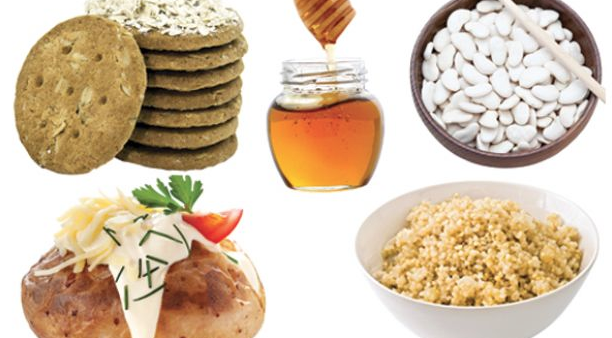
“Are carbs healthy? .. How many carbs should we eat in a day? .. Will cutting carbs help me to lose weight?!”
These are all questions that I receive on an almost daily basis… first fats are “evil” and now, thanks mainly to Robert Atkins, carbs are “evil”! .. Or are they? People looking for a quick fix when it comes to weight loss may think that ‘cutting carbs’ is the only way to shift fat but the truth is that the ‘half a stone weight loss in a week’ is probably due to losing glycogen stores (stored carbohydratess in the liver and muscles) and water, and maybe some muscle, rather than fat. One gram of glycogen is attached to four grams of water so all those trips to the toilet means major fluid (and subsequently weight) loss!
Cutting carbs out of your diet may also leave you feeling tired and headachey, as carbs are our bodies fuel source; glucose, which is what carbs break down into, is what our brains use to function.. so by day seven of your ‘no carb diet’, the gym and that report that you have to write may not seem so high on the agenda(!).
So now that I’ve (hopefully) put you OFF going on the crash, no carbs before marbs diet.. let’s get the lowdown on CARBS.. aka CARBOHYDRATES.
- What are Carbohydrates?
Carbohydrates, or carbs, break down in the body into glucose, which is what our body uses as a fuel source (i.e. energy) – our muscles and major organs use it to function optimally.
Carbs can be broken down into two different types:
Starches – These include foods such as bread, rice, pasta, potatoes, lentils, quinoa and oats. There are smaller amounts of starchy carbs found in some vegetables such as parsnips and sweetcorn with some vegetables containing virtually none e.g. spinach, celery or cauliflower.
Sugars – These include natural sugars found in fruit (fructose) and milk (lactose) as well as the obvious table/added sugar (sucrose) found in processed foods such as biscuits, sweets and cakes.
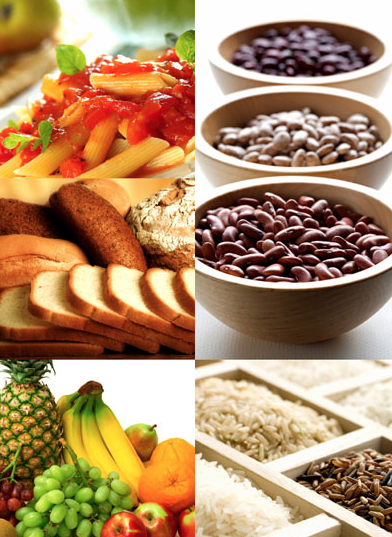
All carbohydrates are a natural source of energy however some will provide more benefits than others. For example, starchy carbs such as potatoes will provide insoluble fibre (roughage!), vitamin C, vitamin B6, potassium and copper, as well as energy, where as table sugar will just provide energy (and will rot your teeth at the same time!). Whole grains, such as granary bread, oats and wholewheat pasta can help to prevent heart disease and stroke; meaning the ‘brown versions’ really are better!
Fruit and vegetables are of course highly nutritious and an easy way to think of a balanced diet is to ‘eat a rainbow’ – eat as many (natural) colours as possible. Milk and yoghurt provide our bodies with calcium as well as protein and make a great post workout snack to replenish your glycogen (energy) stores. Talking of workouts, carbohydrates also enhance the uptake of amino acids (the breakdown of protein) after a workout, are filling (they can help to enhance satiety after a meal) and are relatively low in calorie; 1g of carbohydrate provides 4 calories, which is the same number of calories in 1g of protein and less than half that of fat (9 calories per gram).
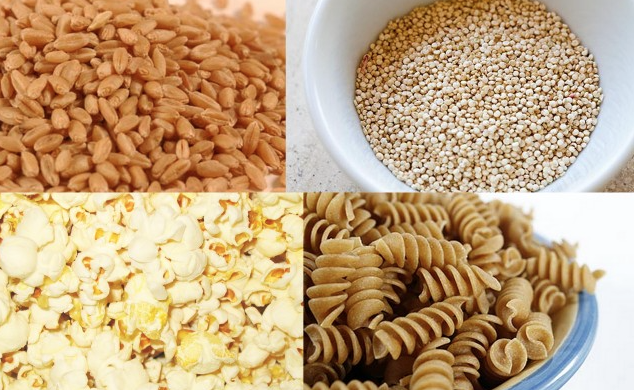
- Quality Vs. Quantity
So what matters more, carb quality (type) or quantity (amount)? When it comes to health and weight, both are paramount however when it comes to blood glucose levels it’s the quantity that really matters.. the type of carb (or glycaemic index) is merely a “tinkering tool”.
Quantity
When it comes to the amount of carbs that we should be eating a day this depends on a lot of things, but mainly how active you are! The more active you are, and the bigger your body, the more carbs that you will need to fuel it. As a general rule it is advised to eat around a fist-sized serving of starchy carbs at meal times (1/4 of your plate for weight loss and 1/3 of your plate for weight maintenance) – but you may need more if you are more active than the norm. A really easy guide though is to read the label on packets – go by the serving suggested e.g. 75g of dried pasta or rice – once you’ve weighed it out once then you’ll know what ‘one serving’ looks like!
We are advised to eat at least 5 portions of fruit and vegetables a day (I advise 5-9 portions; a portion is 80g or a handful, in order to obtain all of the nutrients, including phytonutrients and antioxidants, that we need. In Australia they advise 5 portions of vegetables a day and 2 portions of fruit – I personally eat way more than 2 pieces of fruit a day and don’t worry about it.. I mean what is classed as a fruit anyway – are tomatoes a fruit or a salad vegetable? And aren’t bananas a herb?! 😉
When it comes to milk and yoghurt it is advised to eat these foods 2-3 times a day; a portion is either 1/3 of a pint of milk or 1 small pot of yoghurt. Cheese also counts towards your calcium and protein intake however doesn’t contain much in the way of lactose (carbs), so won’t be getting any more of a mention in this blog post!
Regarding our blood glucose levels (also known as blood sugar levels), the larger the quantity of carbs that you eat, the higher your blood glucose levels will be. This is why people with diabetes (who can’t control their blood glucose levels very well) are advised to spread out the carbs that they eat.. which is why eating a 4 slices of toast with a bowl of porridge for breakfast and then eating just chicken and spinach for dinner is NOT advisable! It would be much better to stick to just a bowl of porridge at breakfast and include some basmati rice at dinner i.e. spreading out the carb load.

Quality
As I eluded to before, not all carbs are created equal, with some providing higher levels of goodness/nutrients than others. In general we should aim to eat an abundance of vegetables and salad, fruit and milk daily and starchy carbohydrates with our meals. The majority of fruit, including fruit juice, and vegetables, as well as milk/yoghurt have a relatively low glyceamic index (GI), which means that their energy (glucose) is released slowly – remember though that it is the AMOUNT of carbs (glyceamic load) that you eat that has the biggest impact on blood glucose levels.
When it comes to starchy carbs I suggest that you choose whole-grain and lower GI i.e. wholewheat pasta, quinoa, brown basmati rice (white basmati rice is also low GI but isn’t a wholegrain), oats, sweet potato, beans/pulses/lentils or muesli. In general, the less processed/more natural a carb is, the lower the GI (the body has to work harder with fibrous foods to release the energy).
When it comes to higher GI carbs such as white crusty bread or your favourite oven chips (!), the key is to eat them with some protein (which slows digestion and thus slows the release of glucose into the blood stream) as well as some salad or vegetables (added fibre to slow digestion further). A high GI carb such as chips made from old potato, combined with a protein such as a homemade turkey burger, and fibre such as salad means that the overall GI of the meal is actually lower:
High GI Food + Low GI Foods = Medium GI Meal
However remember that it’s the number of chips/size of potato that you eat that really matters.. stick to a handful or 1/4-1/3 of your plate and you can still enjoy your chips guilt free ;).
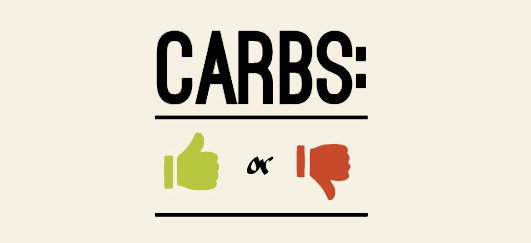
So to answer the question ‘Should you cut out carbs’, the answer is no. When it comes to weight gain it’s an excess of CALORIES that causes it, not over-eating on one particular macronutrient (carbs, protein or fat). Having said that though it is often the high sugar, high fat and heavily processed carb snacks such as crisps, biscuits and cakes that are a) convenient and b) easy to over-eat on.. so try to eat these foods as minimally as possible – keep them out of the house if needs be!
My advice isn’t to ban or evilize an entire food group – some carbs are better than others so just choose wisely i.e. lots of vegetables and salad, fruit and milk daily and low GI/wholegrain starchy carbs in appropriate quantities to fuel your day. Pasta for example is perfectly acceptable to have with your evening meal however don’t fill your entire plate with the stuff and then load it with an indulgent carbonara sauce if you’re not running a marathon the next day ;).
I really hope you’ve found this blog post useful. If you have any further questions just leave a comment and I’ll get back to you as soon as I can.
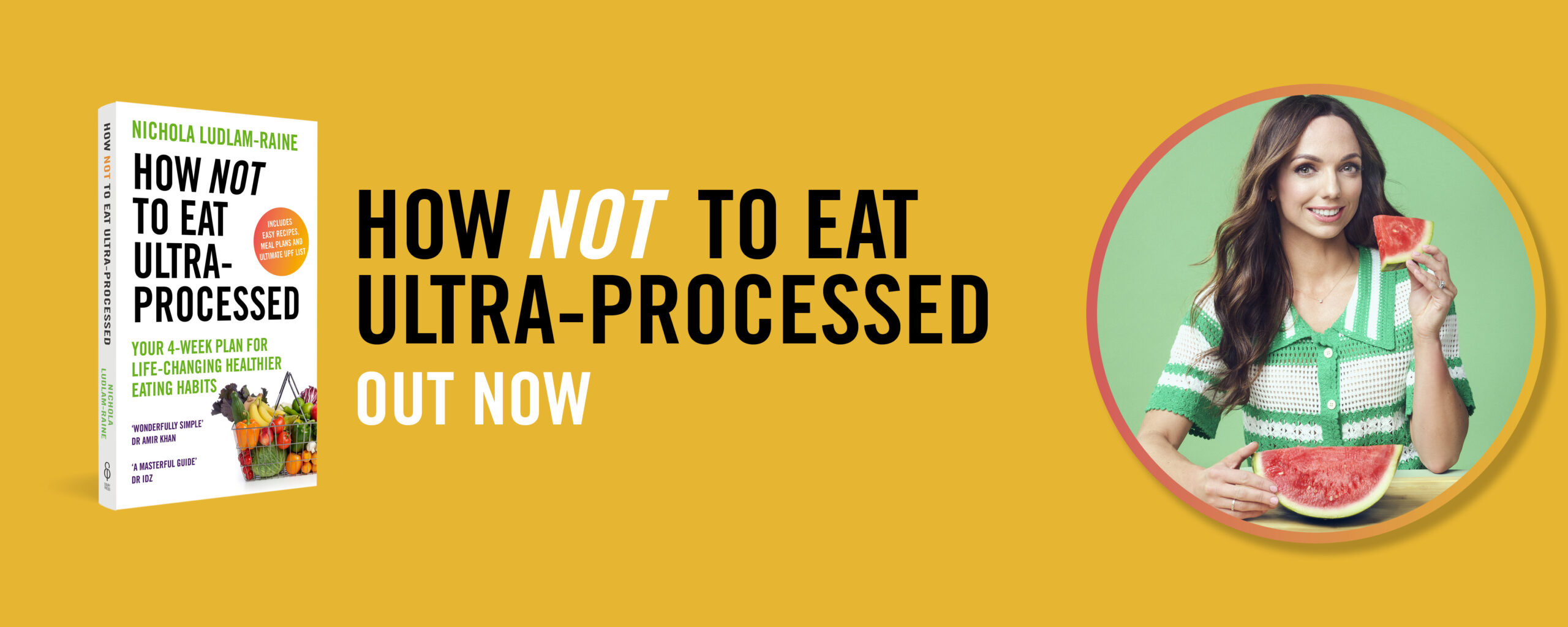
Very interesting and informative.I have I.b.s. and can’t eat whole wheat pasta,brown rice or wholemeal bread,any suggestions please ?? I can’t eat parsnips,sprouts ,mushrooms or sweet corn,cream and anything from the pig ! Not the end of the world but quite annoying sometimes x
Hello! Yes some high fibre foods can be problematic in some people.. I would stick with freshly cooked potatoes (don’t eat them cooled!), fresh pasta (again not cold so you avoid resistant starches which can bloat), quinoa, oats, crackers and basmati rice 🙂 Hope this helps! Nic x
The truth about carbs has always been a mystery to me. This is very informative so thank you.
No problem, thanks for your comment! Nic
Great post Nicola, thank you. Is granary bread a good choice for weight loss? If I just had 1 slice and poached egg for lunch? Just hear so many bad things about bread and weight loss! Xx
Yes it’s a perfectly healthy choice 🙂 It’s Low GI so yes 1-2 slices for lunch with an egg would be perfect! Nic xx
Hey nic! I’m trying to lose weight and am struggling for lunches to take to work? Any help would be greatly appreciated! Are wholemeal rolls ok? Also are wraps better than bread or is pasta/rice better for you xx
Hey! Watch the video that I uploaded today on my YouTube Channel! x
Hi nic just wondering why sweet potatoes are deemed to be healthier than roosters ? Thanks
Hello! Couldn’t be due to the vitamin content and GI rating 🙂 x
Is the go of sweet potatoes lower ? Thanks
Where can you find the GI rating on packaging? (UK)
It’s not listed usually!
Really interesting article – if i’m eating under the recommended calories a day, but a considerable amount of this is carbs, will this mean that I will gain weight?
No! Calories are king for weight management.
Would you consider posting a rye bread recipe ?
Hello! I will work on one for you 🙂 In the mean time though check out this: http://nicsnutrition.com/sukri-gluten-wheat-free-bread-mix-review/
Would you consider posting a rye bread recipe ?
I enjoyed this, very sensicle (hope thats a word!), article. Healthy carbs are definitely not evil and I agree there are lots of health benefits that we should enjoy.
I have developed many bread recipes that are wholegrain, fortified with healthy things such as flaxs and healthy fats, and some lower GI rye breads. Would you like a guest blog to provide your readers with a rye bread recipe?
Ooh feel free to email me it!! xx